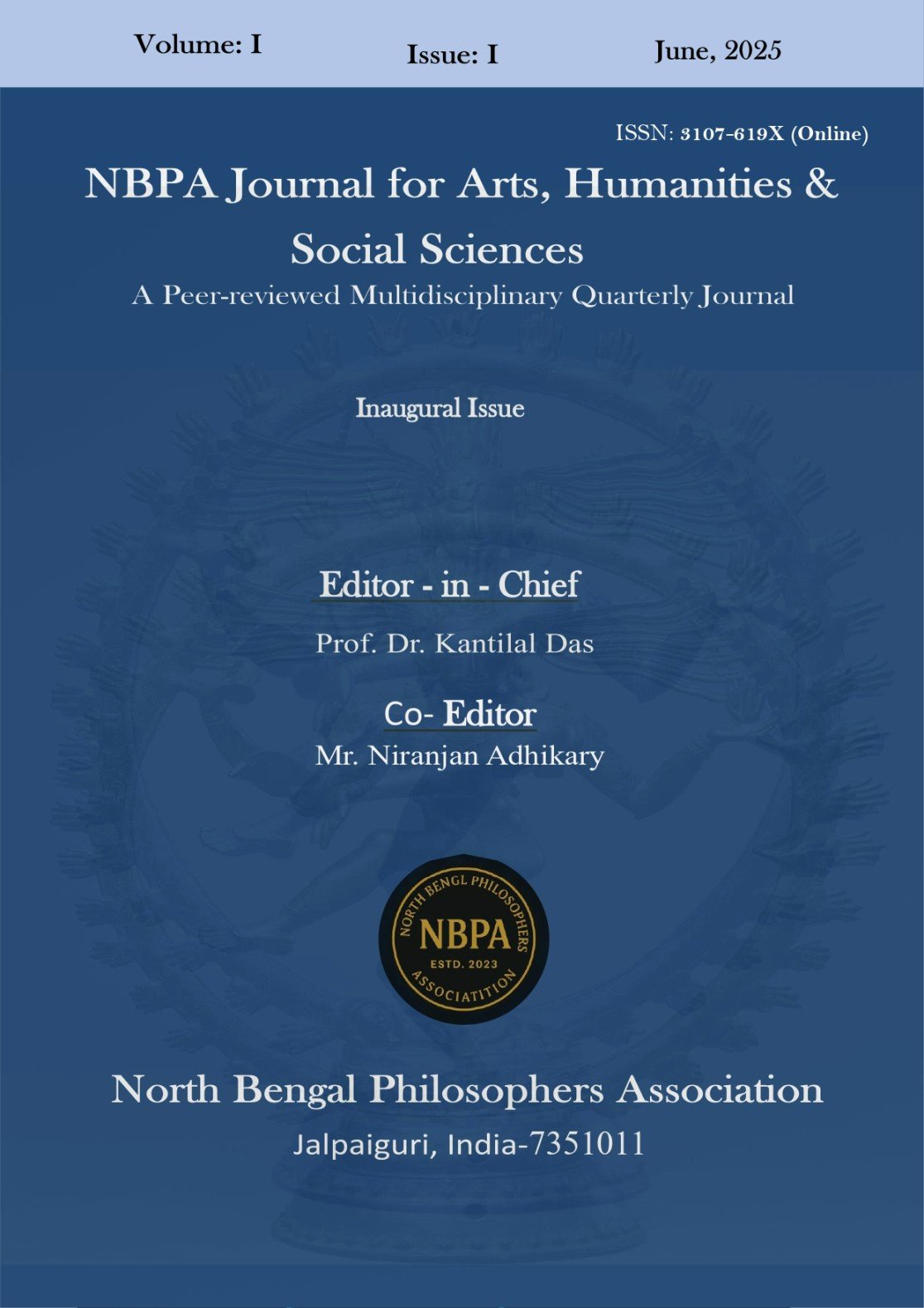Nagarjuna and Later Wittgenstein: A Comparative Analysis of the Relation Between Language and Reality
- Authors
-
-
- Keywords:
- language, reality, language-game, conventional world, form of life, ordinary language
- Abstract
-
The main strategy of this paper is to make a comparative analysis of the relationship between Later Wittgenstein and Nagarjuna concerning language and reality. Even though the appearance of Wittgenstein and Nagarjuna is quite different in time, and one was doing systematic philosophy within the womb of Western tradition, unlike the other, a careful outlook would reflect that their philosophical thinking had proximity to each other. In this short and brief paper, an attempt will be made to show in what sense their philosophical thinking comes together. It seems that both of them prefer ordinary language within the womb of the conventional philosophical system. As a result of that, the impact of their philosophical thinking is noteworthy. Wittgenstein and Nagarjuna deny the relevance of canonical language based on the ontological foundation and logical principles. Later, Wittgenstein’s idea to cognize reality through ordinary language is very similar to that of Nagarjuna’s concept of reality. Their way of dealing with language was very proximate in manner. The conclusion of this paper consists of a critical analysis of the philosophical implications of Wittgenstein and Nagarjuna, not only by way of showing the meeting point between them but also by explicating their philosophical impact on other theories as well.
- Downloads
-
Download data is not yet available.
- Author Biography
- References
-
Conze, E. (1975). Buddhist Studies 1934-1972. US: University of Hawaii Press. (Hereafter cited as Conze, Buddhist Studies), published in Philosophy East and West (January 1963).
Cheng, Hsueh-Li (1981). “Nagarjuna, Kant and Wittgenstein: The San-Lun Mādhyamika Exposition of Emptiness.” Religious Studies, vol.17. Cambridge University Press.
Chetry, S. (2017). Status of the External World in Buddhist Philosophy: A Study.
Gudmunsen, C. (1977). Wittgenstein and Buddhism. London: Macmillan Education LTD.
Kalupahana, David J. (1999). Mulamadhyamakakarika of Nagarjuna (Trans.). Delhi: Motilal Banarasidas Publishers Private Limited.
Tuck, A. P. (1990). Comparative Philosophy and The Philosophy of Scholarship. New York: Oxford University Press.
Streng, F. J. (1967). Emptiness: A Study in Religious Meaning. Tennessee: Abingdon Press.
Waldo, I. (1978). “Nagarjuna and Analytic Philosophy II.” Philosophy East and West. US: University of Hawaii Press.
Westerhoff, J. (2009). Nagarjuna’s Mādhyamika. UK: Oxford University Press.
Wittgenstein, L. (1974). Tractatus Logico-Philosophicus. New York: Routledge.
Wittgenstein, L. (1976). Philosophical Investigations. London: Oxford University Press.
- Cover Image
-

- Downloads
- Published
- 2025-06-13
- Section
- Articles
- License
-
Copyright (c) 2025 Nirnajan Adhikary (Author)

This work is licensed under a Creative Commons Attribution-NonCommercial-NoDerivatives 4.0 International License.
How to Cite
Similar Articles
- Dr. Srobon K. Mondol, Is Use Enough? The Problem of Normativity in Wittgenstein’s Theory of Meaning , NBPA Journal for Arts, Humanities & Social Sciences : Vol. 1 No. 1 (2025): NBPA Journal for Arts, Humanities & Social Sciences
- Dr. Rajkumar Modak, An Exposition on Wittgenstein’s Notion of Necessity , NBPA Journal for Arts, Humanities & Social Sciences : Vol. 1 No. 1 (2025): NBPA Journal for Arts, Humanities & Social Sciences
- Dr. Kuheli Biswas, A Study on ‘Consciousness’ with Special Reference to Vijñaptimātratāsiddhi and Lankavatārasūtra , NBPA Journal for Arts, Humanities & Social Sciences : Vol. 1 No. 1 (2025): NBPA Journal for Arts, Humanities & Social Sciences
- Dr. Raghunath Ghosh, The Advaita Critique of Vaiśeṣika Theory of Creation , NBPA Journal for Arts, Humanities & Social Sciences : Vol. 1 No. 1 (2025): NBPA Journal for Arts, Humanities & Social Sciences
- Dr. Bijay K. Sarkar, How Death is in Tagore’s Thoughts , NBPA Journal for Arts, Humanities & Social Sciences : Vol. 1 No. 1 (2025): NBPA Journal for Arts, Humanities & Social Sciences
- Dr. Bipasha Joardar, Environmental Feminism: Intersections of Gender, Nature, and Justice – An In-Depth Academic Analysis , NBPA Journal for Arts, Humanities & Social Sciences : Vol. 1 No. 1 (2025): NBPA Journal for Arts, Humanities & Social Sciences
- Dr. Manoranjan P. Sing, Conceptualising Man, Religion, and Morality in Gandhian Thought: Towards a Pedagogy of Truth , NBPA Journal for Arts, Humanities & Social Sciences : Vol. 1 No. 1 (2025): NBPA Journal for Arts, Humanities & Social Sciences
- Dr. Nargish Afroza, Penelhum’s arguments on Hume’s concept of personal identity in terms of“linguistic mistake”: A Defense , NBPA Journal for Arts, Humanities & Social Sciences : Vol. 1 No. 1 (2025): NBPA Journal for Arts, Humanities & Social Sciences
- Kirtika Das, Buddhism on Mindfulness, Social Activism, and Peace , NBPA Journal for Arts, Humanities & Social Sciences : Vol. 1 No. 1 (2025): NBPA Journal for Arts, Humanities & Social Sciences
- Beauty Das, The Evolution of Reason: Post-Kantian Transformations of Rationality , NBPA Journal for Arts, Humanities & Social Sciences : Vol. 1 No. 1 (2025): NBPA Journal for Arts, Humanities & Social Sciences
You may also start an advanced similarity search for this article.
